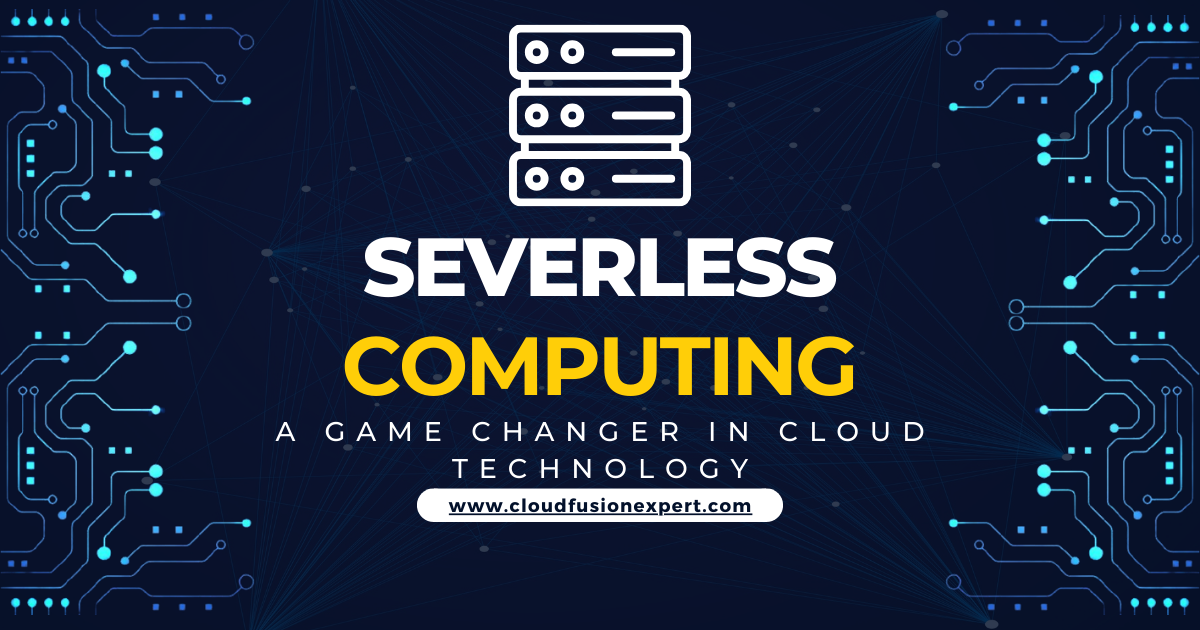Introduction
Cloud computing has revolutionized the way businesses manage and scale their applications and services. Among the many innovations in cloud technology, serverless computing stands out as a game-changer.
What is serverless computing?
Serverless computing, often referred to as Function-as-a-Service (FaaS), is a cloud computing model where cloud providers automatically manage the infrastructure needed to run code. In serverless architecture, developers focus only on writing code functions and do not need to worry about provisioning, scaling, or maintaining servers.
Key Features of Serverless Computing
Automatic Scalability: Serverless platforms automatically scale your applications based on incoming traffic. You don’t need to pre-allocate resources or worry about capacity planning.
Pay-per-use billing: With serverless, you are billed only for the actual compute time consumed by your tasks. There are no charges for idle resources, making it cost-effective for many use cases.
Low operational overhead: Serverless platforms handle server management, OS patching, and other infrastructure-related tasks, reducing the operational burden on development teams.
Event-driven: Serverless applications are event-driven, reacting to triggers such as HTTP requests, database changes, or messages from a queue, enabling real-time processing.
High Availability: Cloud providers provide built-in redundancy and high availability, ensuring that your application remains reliable.
Benefits of Serverless Computing
- Cost Efficiency
The most important advantage of serverless computing is cost efficiency. With the traditional server-based model, you pay for continuous server uptime, even when your application is not actively handling requests. In contrast, serverless platforms charge only for the resources consumed during code execution. This pay-as-you-go model can lead to significant cost savings.
- Scalability and Performance
Serverless computing provides effortless scalability. As your application experiences a spike in traffic, the platform automatically scales up to handle the increased load.
- Developer Productivity
Serverless allows developers to focus on writing code rather than managing servers. This increases developer productivity, reduces time to market, and allows teams to work faster.
- Lower operating overhead
With serverless, you hand over operational tasks like server provisioning, patch management, and infrastructure scaling to the cloud provider. This reduces the operational burden on your team, allowing them to focus on code development and business logic.
- Event-driven architecture
Serverless computing encourages an event-driven architecture, which is suitable for modern, responsive applications. Events trigger functions, allowing you to create real-time, responsive systems that can respond immediately to changes in data or user interactions.
Use cases for serverless computing
Serverless computing is versatile and can be applied to a variety of use cases, including:
Web Applications: Serverless is an excellent choice for building web applications, especially those with variable traffic patterns. This ensures consistent performance and cost efficiency.
APIs and microservices: Serverless can power APIs and microservices, making it easier to scale individual functions independently and integrate with other services.
Data Processing: Serverless is suitable for data processing tasks, such as image and video processing, data transformation, and ETL (extract, transform, load) operations.
IoT Applications: Internet of Things (IoT) applications benefit from serverless architecture, handling incoming device data and responding in real time.
for more cloud computing check out our blog and Microsoft azure serverless page

